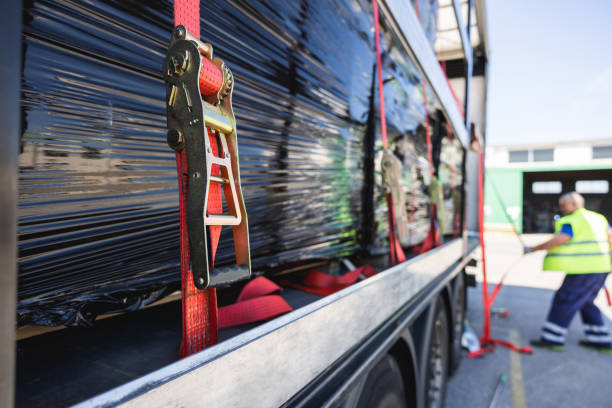Ratchet straps are an excellent option to secure your cargo. They reduce the chance of injuries, damage, and accidents while driving. It is essential to understand the maximum working load of your straps.
The capacity to work for the ratchet strap is about one-third of its breaking strength. The type of hook that is connected to the end fitting could influence the capacity to work. It could be a flat hook or wire hook.
Cargo securing straps
Securing your cargo is essential to stop it from moving throughout transport. This is especially important for those transporting fragile or expensive goods. Securing straps for cargo are a quick and easy method of securing your load. Additionally, they are affordable. To ensure their durability they need regular maintenance. You should, for example avoid sharp edges and any debris that can harm the straps. Keep them in a clean dry, dry location.
The strap ends are fitted with s-hooks as well as flat hooks. The s hook can be used with all types of anchor points. However, flat hooks are best suited to flatbed trailers.
To use the tie-down strap with ratchets, connect the s-hooks to the anchor points, and pull on the loose end to remove any excess slack. To secure your cargo to the strap, tighten it using the ratchet handle. Over-tightening can damage your cargo as well as the ratchet handle. It is also recommended to regularly inspect your straps for wear and tear.
Straps for tie-downs with heavy duty
When you’re transporting an ATV or dirtbike on a trailer or securing the bed of your truck with lumber Heavy-duty tie-down straps keep your cargo secure during the ride. These ratchet straps are made of heavy-duty and are available with a range of hardware options, including wire hooks, S hooks and J hooks. They are available with various working capacities to suit your requirements.
Start by attaching one end of the ratchet strap to the item you want to anchor. You can then turn the ratchet until you get enough tension to secure your cargo. Once you’ve done this, tighten the ratchet until it’s no longer slack.
After you’ve finished, make certain to store the straps in a dry place away from direct sunlight as they can become brittle over time. This will allow them to last longer and the cargo will arrive at its destination in the same level of quality as it was when it was on the road. It’s also crucial to inspect your straps on a regular basis for indications of wear and tear.
Ratchet strap load capacity
If you are using an ratchet belt to hold cargo, you must take into account the capacity of the load. This is day cao tang do the maximum amount of weight that the strap is able to hold before it begins to break or lose strength. You can determine this information by looking at the elongation percentage, which is printed on its label and must not exceed 7%.
It is vital because many people make the mistake of comparing the limit of the load and the breaking strength. It’s therefore vital that you label your ratchet belts using this information. It’s crucial to know how much weight your straps are able to take on and whether they’re suitable for use.
Ratchet straps come in various sizes, depending on the kind of cargo you’re securing. 1-inch straps are smaller in working loads but are great for light-duty motorcycles or applications. While 4-inch straps are used for flatbed trailers as well as heavy items. The straps come with different hardware hooks like S hooks or wire hooks. They are also suitable for chains, snap-hooks, D rings or E track fittings. Most popular are S-hooks, which are simple to use and come with the highest working load ratings.
Polyester vs. nylon ratchet straps
Ratchet straps are among most crucial tools to control cargo. They are designed to withstand massive loads and ensure the safety of cargo. They can also protect against damage caused by elements. They can be utilized for a variety of products including landscaping materials and steel coils. Before using these straps it is essential to examine they are adhering to the working load limit on the label. To ensure their durability they should be protected from heat sources.
Straps with ratchets made of polyester are more flexible than nylon. They can be used to make cam buckles, e-track straps, and endless loops. Mildew, mold, and acids aren’t a problem for them. They are also compatible using snap hooks with flat hooks or flat hooks, wire hooks, and grab hooks.
Propylene straps shouldn’t be used with high loads since they stretch in these circumstances. Nylon and polyester are better suited to handle the most heaviest loads since they have higher Tensile force than propylene. They also resist UV radiation.
Hook types for ratchet straps
It is crucial to select the correct hooks and connectors to a the ratchet belt to transport cargo efficiently. These end-fittings permit the strap to attach to various anchor points on cargo or vehicles, which ensures a secure hold. Delta rings, S-hooks and flat hooks are the most common types of end fittings. Flat hooks are shaped like S-shaped ones that have a basic S shape that allows them to work with various anchor points. Delta rings are closed steel constructions. S-hooks have a simple design that makes them easy to attach or release.
If the straps you ratchet are exposed to the elements regularly You should think about purchasing stainless steel hardware that resists the effects of the elements and weather conditions. It is recommended to utilize this kind of hardware in conjunction with E-track or L-track systems because it will help to make the process easier.
Ratchet straps are used to secure many items from large equipment to small appliances. They are the quickest and most secure method of securing cargo, they’re also the easiest to use. However, it is important to verify the working load limit (WLL) of each ratchet strap before using it. If the WLL isn’t sufficient can result in damage to cargo or increased risks of injury to workers.




